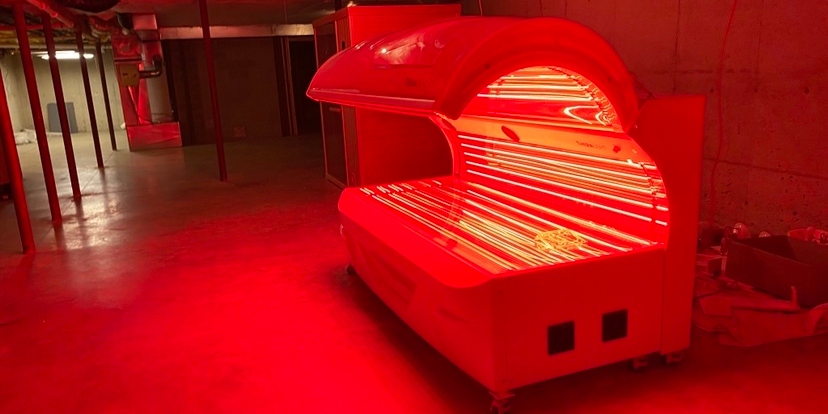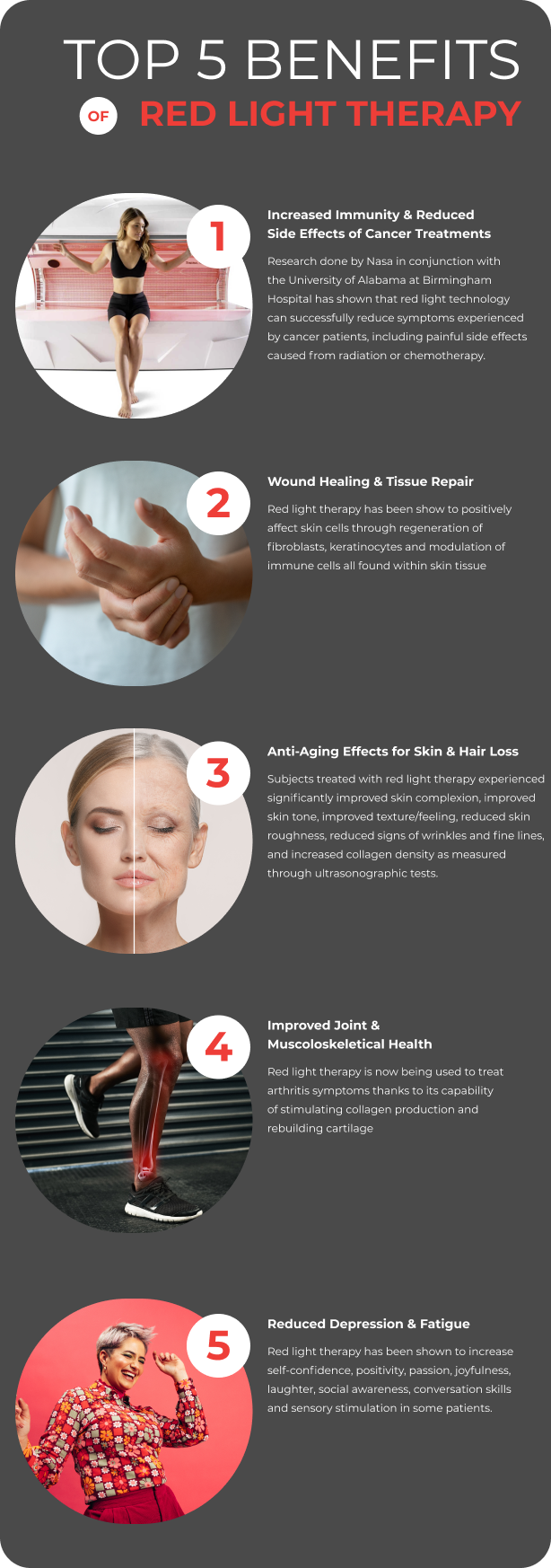Sleep & Mood
Book an Appointment 089 403 8144
Red Light Therapy Enquiries 053 940 3946
| Red Light Therapy | Single Session | €80 |
| RLT Gold Package | 5 Sessions | €350 |
| RLT Platinum Package | 10 Sessions | €600 |
Sleep & Mood
Red light therapy can benefit sleep and mood by regulating circadian rhythms, increasing the production of serotonin and melatonin, reducing stress and anxiety, and promoting relaxation.
Red light therapy can regulate circadian rhythms by stimulating the production of melanopsin, a protein that is involved in regulating the body’s natural sleep-wake cycle. This can help to improve sleep quality and duration, leading to better overall mood and cognitive function.
Red light therapy also increases the production of serotonin, a neurotransmitter that is associated with feelings of happiness and well-being, and melatonin, a hormone that regulates sleep-wake cycles. This can help to improve mood and promote relaxation, leading to a better quality of sleep and overall well-being.
Moreover, red light therapy has been shown to reduce stress and anxiety by reducing cortisol levels, a hormone that is associated with stress. This can lead to improved mood and a greater sense of well-being.
Finally, red light therapy can promote relaxation by stimulating the production of endorphins, which are natural painkillers that can help to reduce stress and promote a sense of calm and relaxation.
Overall, red light therapy is a safe and effective treatment for improving sleep and mood, and it can help to reduce stress and anxiety while promoting relaxation and a greater sense of well-being.

Harvard-MIT Division of Health Sciences and Technology studied Photobiomodulation (PBM), red and near-infrared light, and its ability to stimulate healing, relieve pain, and reduce inflammation. One of the most reproducible effects of PBM is an overall reduction in inflammation, which is particularly important for disorders of the joints, traumatic injuries, lung disorders, and, in the brain. PBM has been shown to reduce markers of M1 phenotype in activated macrophages. PBM can reduce inflammation in the brain, abdominal fat, wounds, lungs, spinal cord. Learn More >
Department of Anesthesiology, College of Medicine, University of Arizona reviewed a growing body of evidence that supports the modulation of pain by light exposure. As such, phototherapy is being increasingly utilized for the management of a variety of pain conditions. Learn More >
The Institute of Ophthalmology of the University of London has recently proved that red light improves the declining eyesight for individuals over 40. Just a 3-minute of red light of 670nm a day for 2 weeks showed significant improvement. Read the full study published 6.29.20 here >
